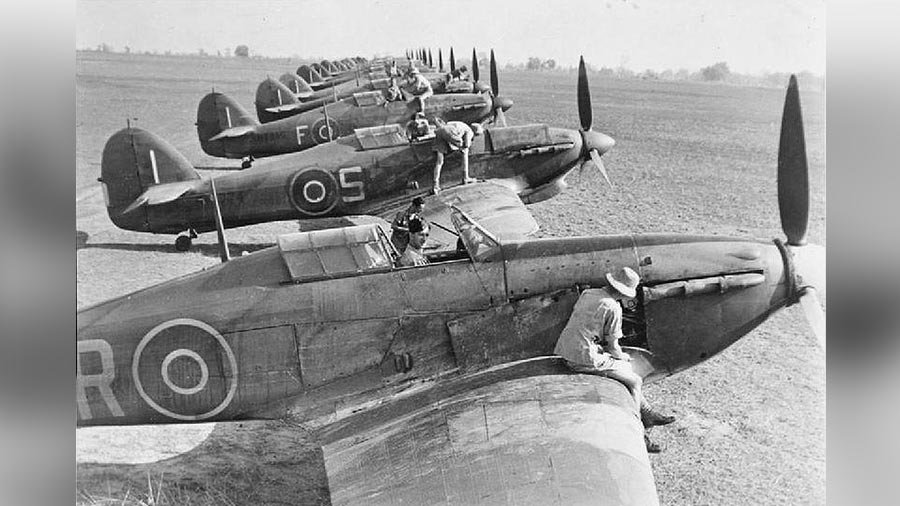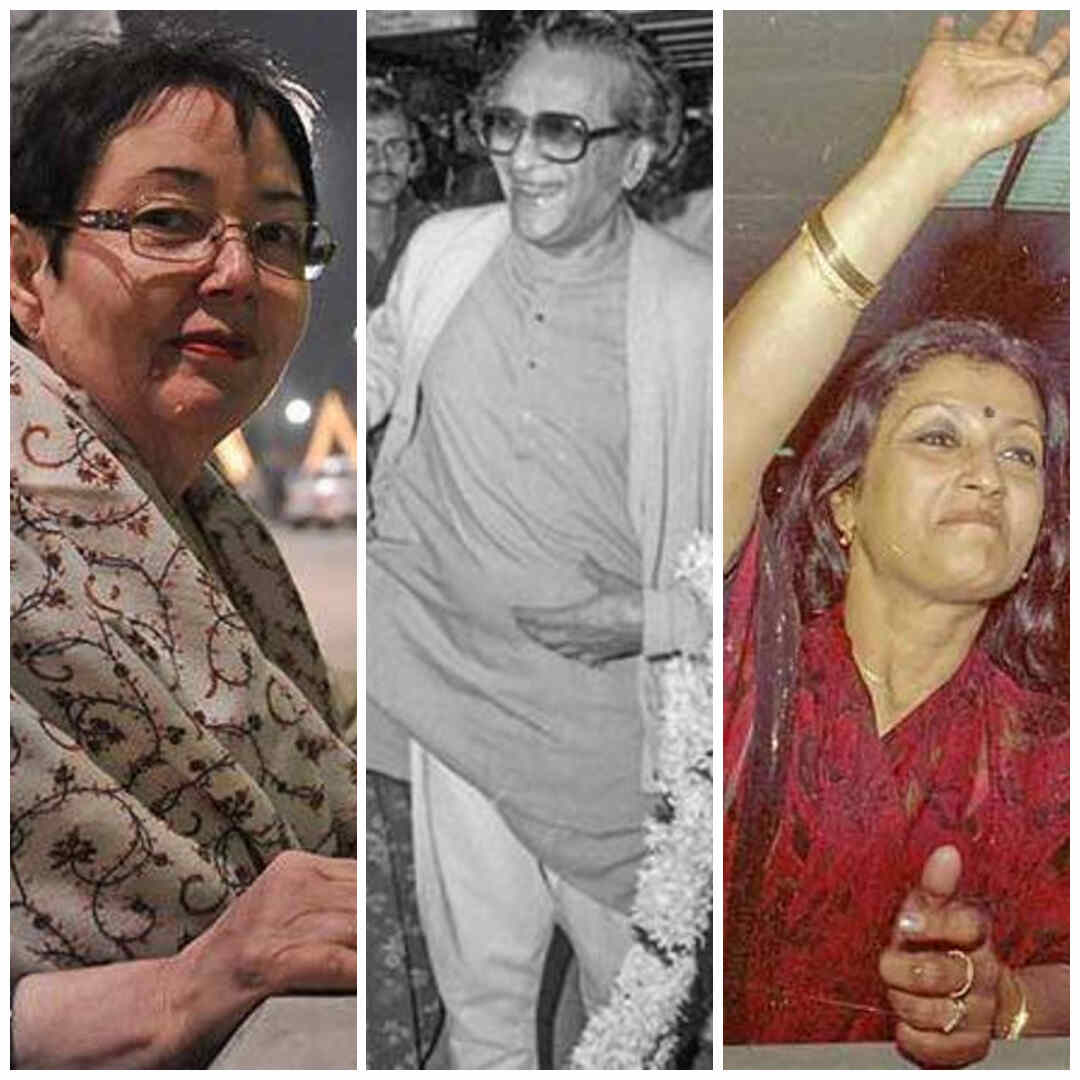Human civilisation took a giant leap on December 23, 1903, when two brothers — Orville Wright and Wilbur Wright — first took a flight in their newly invented flying machine. Their amazing invention and daring act shaped the world in a new form. Within a few years, air travel became the backbone of world transportation — both for travellers and cargo.
Calcutta was a truly international city in the first half of the 20th century and it was evident that the mad craze of air transport would soon arrive at its horizon.
From 1910 to the end of World War II, the city witnessed several landmark events in the history of Indian civil and military aviation. Once a major hub of air connectivity to the world, Calcutta’s fall from the apex started in 1968 and reached a low in the late 1980s. However the city has recovered some of its lost glory in the world of aviation ever since.
Dumdum was not the only arena for an aeroplane
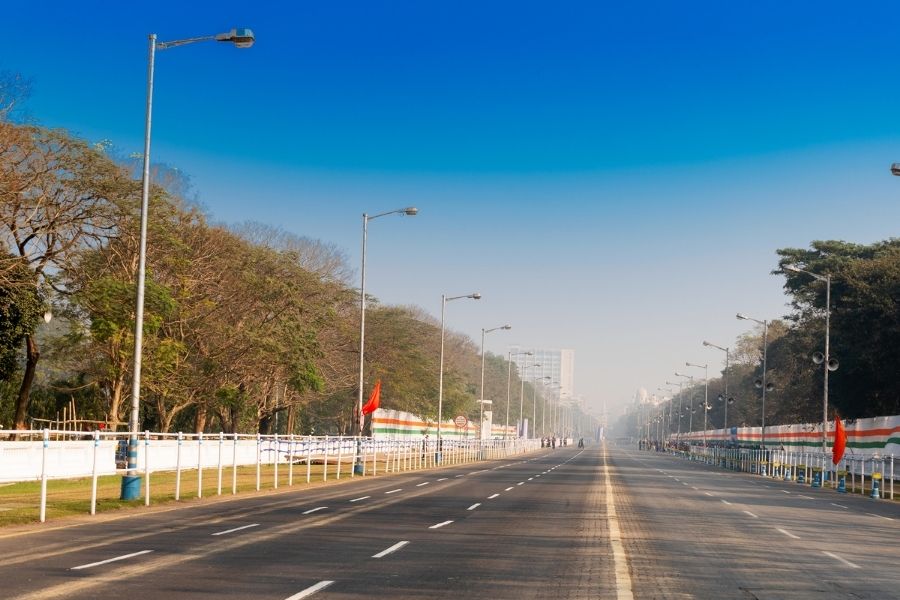
During World War II, Calcutta’s Red Road was used as a runway for US bombers iStock
You are mistaken if you think Calcutta’s aviation history started from Dumdum, where its only airport was built in 1924. Rather, the city had several locations, where, at the primary stage, aeroplanes used to take off and land.
On December 28, 1910, Calcutta witnessed India’s first air show. Two airships carried 21 passengers and took off for a joy ride. It landed back on the green grass of Tollygunge, then on the outskirts of the city. So, it was not Dumdum but Tollygunge that had the pride of hosting Calcutta’s first plane.
Two years after this, on December 24, 1912, two French pilots named Jules Tyck and Baron De Cators took a flight over the skies of Calcutta – they took off from and landed at Calcutta Maidan.
In March or April of 1920, when the Victoria Memorial was under construction, a fleet of Italian aircraft on their way to Tokyo from Rome used the empty ground near the construction site of Victoria Memorial as their airbase.
From 1938, when Imperial Airways introduced a Flying Boat service in the London-Karachi-Singapore route, the seaplanes used to land on the Ganga near Willingdon Bridge (now known as Vivekananda Setu) near Dakshineshwar Kali Temple.
During World War II, Calcutta’s Red Road was used as a runway for US bombers. So, apart from Dumdum, there were many places in Calcutta where take-offs and landings of planes were common events.
Dumdum became a popular airfield from 1924
From 1924, Dumdum started becoming a hub for Calcutta’s aviation activities and flights, though mainly non-commercial and on an irregular basis.
Dumdum’s runway was built in 1930, and before that there was huge risk involved in landing and take-offs from the rough surface. On May 2, 1924, a Frenchman named Lt D’oisy landed at Dumdum followed by two Portuguese pilots named Captain Paes and Captain Beiers on May 30, 1924. Two Dutch pilots named Vander Hoop and H Poleman landed at Dumdum on the night of November 13, 1924, with the help of burning torches. This was the first recorded instance of a night landing in Calcutta by any aircraft.
A prime minister of Pakistan, a premiere of China and a former prime minister of India — all were stuck at Calcutta airport at different times
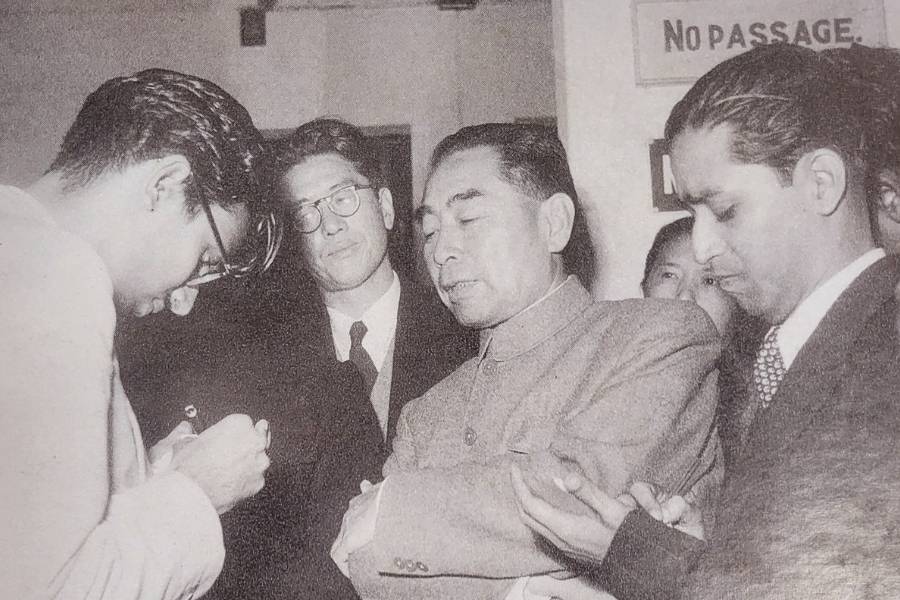
China’s Zhou Enlai at the Calcutta airport in December, 1956 Photo sourced by the author
In December, 1956, Zhou Enlai, premier of the People’s Republic of China, boarded an Indian Airlines DC-4 SkyMaster aircraft from Calcutta to go back to his country. The plane developed a snag at the taxi bay and the flight was not allowed to take off. The entire Chinese delegation, along with Zhou, were deboarded and taken to the VIP restaurant of the airport. It took the entire night to fix the plane and the premier rested inside of the restaurant without any complaint. The next morning, when the flight was ready to take off, all newspapers reported that Zhou had already left India last night, which made the premier break into a laugh.
Md Ali Bogra, the then-Prime Minster of Pakistan, was also stuck at Calcutta airport for eight hours on December 27, 1954, on his way to Jakarta from Karachi. He landed in Calcutta in the early morning and took another flight to Jakarta at 6.45am. But the plane developed some technical issues and was forced to come back to Calcutta within 20 minutes. The Pakistani Prime Minister parked himself and his wife at the VIP lounge. By chance, Jawaharlal Nehru was also at Calcutta airport on his way to Jakarta. Hearing about Bogra’s difficulties, Nehru met him at the VIP lounge.

Indira Gandhi, Jawaharlal Nehru and Subhas Chandra Bose at the Calcutta airport Photo sourced by the author
The experience of Indira Gandhi at the Calcutta airport was even more unfortunate, particularly when she was out of power. She took a flight from Calcutta to Lucknow, but the flight could not land at its destination due to poor visibility. Gandhi came back to Calcutta at 2am in morning and wanted a room at Hotel Airport Ashok. She was told by the Airport Authority of India that no room is available there, although the hotel always had rooms reserved for air passengers. A dejected Gandhi then contacted Binoy Hazra, the director of the Civil Aviation Department in Calcutta. He managed a room for the former prime minister at his guest house. Gandhi agreed to stay there for the next few hours and left for Lucknow the next day after breakfast.
Nihar Ghosh has written that Hazra faced ire of his bosses in higher offices for giving shelter to Gandhi at midnight. Mr Hazra was brave enough to say that he had committed no sin by giving shelter to a lady at midnight.
Subhas Chandra Bose was one of the earliest frequent fliers
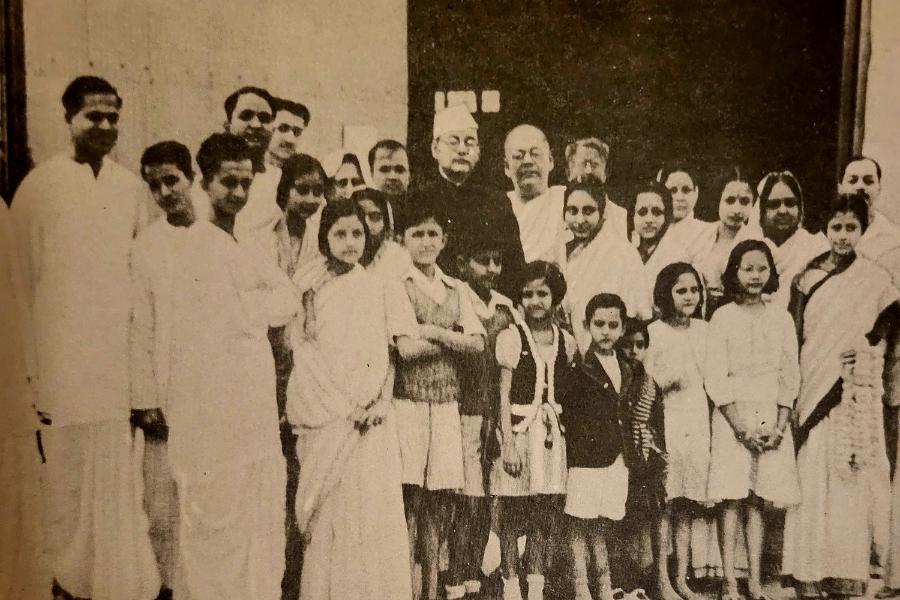
The Bose family at the airport in November 1937 Photo sourced by the author
The real boom in commercial air transport started from the 1930s and two airlines that first started the Calcutta-London route were the British Imperial Airways and the Dutch Royal Dutch Mail Services or KLM. While Imperial started a twice-a-week service to London from 1935, KLM flew thrice a week to London from 1937 — making it the most popular airline connecting Calcutta and Europe.
It was a time when Subhas Chandra Bose, a frequent traveller to Europe, took his first air trip from Calcutta to London in November, 1937.
A large number of Bose’s family members — including his elder brother Sarat Bose and his wife Bibhabati Devi — came to Dumdum airport to see off Subhas. The large family group photo of the Bose family taken at the old Calcutta airport before his departure is now a historical photo. By boarding a Douglas DC-2 KLM flight from Calcutta, Bose became one of the earliest icons to grace Dumdum airport in November 1937. In those days, ticket price of such a trip was around Rs 1,300. Bose’s photo in coat and dhuti, waving his hand to his family members is now considered iconic.
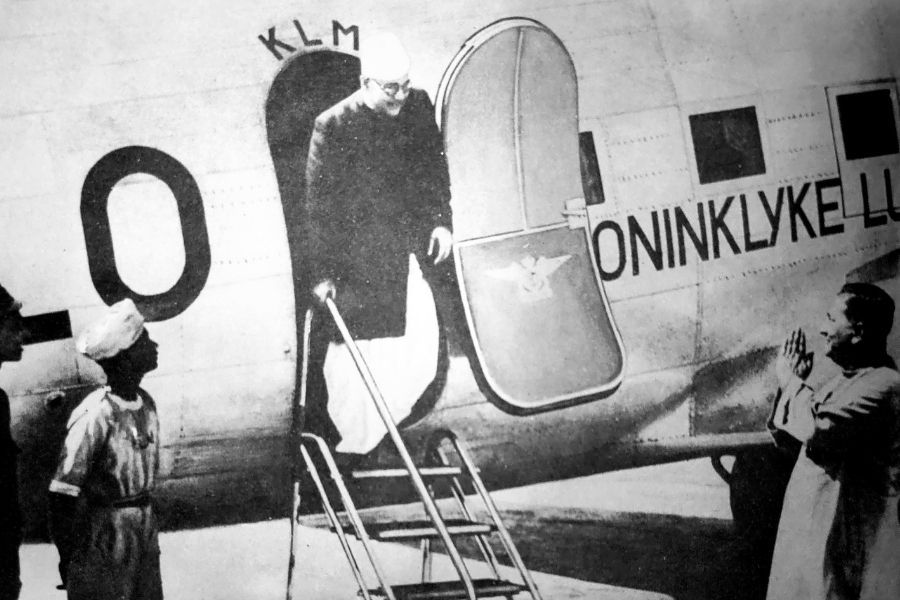
Bose arriving back from London in 1938 Photo sourced by the author
On January 18, 1938, while in London. Bose was announced as the president of the Indian National Congress. This created unimaginable excitement in Bengal, and on his return from London on January 24, 1938, in a KLM flight, he was received by a massive cheering crowd. In mid-1938, Bose again took a flight to Delhi to attend an urgent meeting in a chartered single engine biplane. It cost his party nearly Rs 500 in those days.
We are lucky that every time Bose came to Calcutta airport to take a flight, he was photographed. He was even photographed at Calcutta airport when he came to receive Jawaharlal Nehru and his daughter Indira at Calcutta airport. It is a fitting tribute to Bose that the airport is now named after him.
India’s Air Cargo service started from Calcutta
Though Bombay and Karachi boast many of India’s many ‘firsts’ in aviation history, Calcutta achieved a remarkable milestone as the city to introduce India’s first air cargo service.
It was on May 21, 1927, when an air cargo company named Bengal Air Transport started cargo flights between Calcutta and Bagdogra. However, the service lasted only for a few days due to commercial infeasibility.
Rajiv Gandhi at the Calcutta airport

Rajiv Gandhi during his last visit to Calcutta Photo sourced by the author
Calcutta airport played a vital role in the life of a commercial pilot, who went on to become the country’s prime minister.
On October 31, 1984, Rajiv Gandhi, then a Congress MP, was travelling in Bengal’s Midnapore, when the news broke out that his mother and country’s prime minister, Indira Gandhi, was shot by her own security personnel. Rajiv rushed to Calcutta airport to catch a flight to Delhi. As no Indian media was breaking the news of Indira Gandhi’s condition, Rajiv, at Calcutta airport, tuned in to BBC radio and came to know that his mother is no more. He caught the flight to Delhi with tears in his eyes, allegedly saying, “Does she deserve this?”
On May 7, 1991, then out of power and again emerging as a potential prime ministerial candidate for next term, Rajiv Gandhi came to Bengal to campaign for the Lok Sabha and Assembly election for his party.
He left Calcutta for Burnpur for the last time — flying a plane himself – it was his last visit to Calcutta airport. He would be assassinated on May 21, 1991.
He was perhaps the only national-level politician after Biju Patnaik who had piloted an aircraft from Calcutta airport.
Two iconic training institutions of Bengal
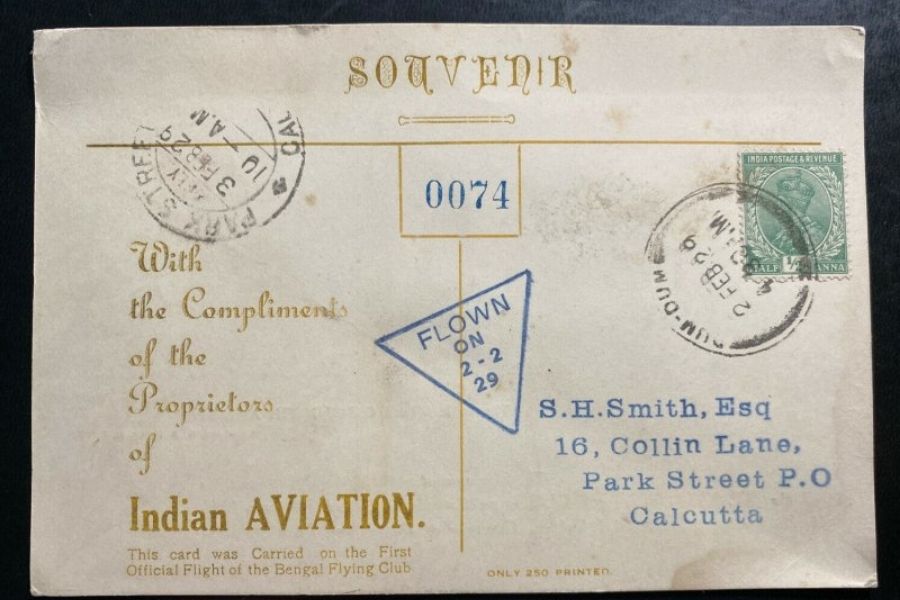
Asia’s first private pilot training school was set up in Calcutta in 1928 at Dumdum, and from February 2, 1929, it started functioning under the name Bengal Flying Club Photo sourced by the author
Surprising as it may sound, Asia’s first private pilot training school was set up in Calcutta in 1928 at Dumdum, and from February 2, 1929, it started functioning under the name Bengal Flying Club. It was established and managed by Sir Rajendranath Mukherjee, JP Ganguly, Biren Roy and Tulsichandra Goswami, among others.
The training school was in Dumdum from 1928 to 1940, and it remained defunct from 1940 to 1946. In 1946, it was restarted from a deserted army camp of New Alipore and then again shifted to Barrackpore army camp in 1948. It moved to a newly built small airport in Behala in 1960. The Bengal Flying Club produced many famous pilots who served both the army and the civil aviation sector of India.
There was another institution named Air Technical Training Institute, founded by one SC Moitra on October 10, 1948, at Dumdum. This was also one of the oldest technical air training institutes of India.
The biggest sky fight over Calcutta
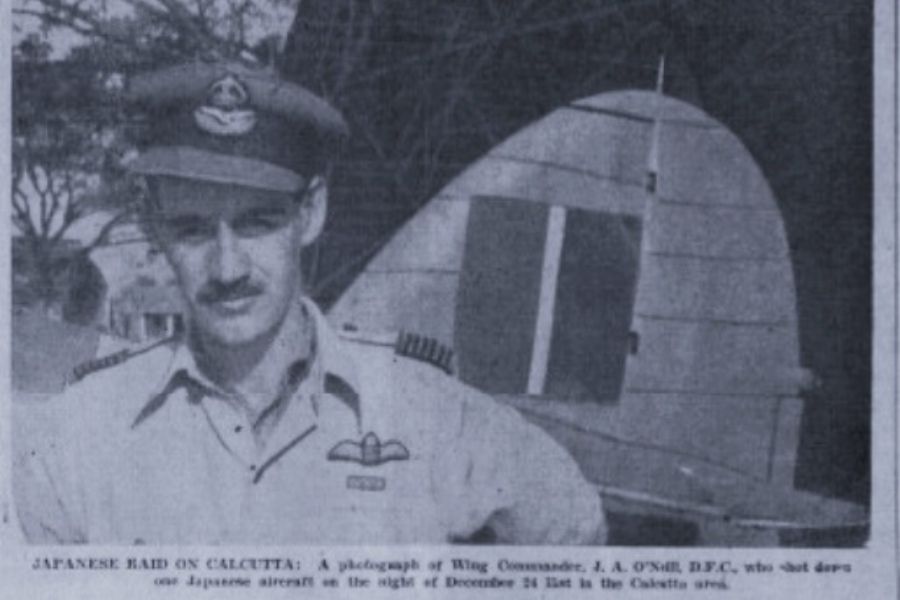
A clipping from Amrita Bazar Patrika about Wing Commander JA O’Neill, who shot down Japanese bombers Photo sourced by the author
During 1942-43, Calcutta was the target of several Japanese air raids. Though the significant loss of property and lives in the port area exposed the British inability to protect India’s richest and biggest city from the enemy, there were a few cases of Japanese bombers being shot down by the British army. One such instance was of the 21-year-old Flight Sergeant AMO Pring, who had the credit of shooting down three Japanese aircraft in four minutes and was awarded the Distinguished Flying Medal by the king. Another name was that of Wing Commander JA O’Neil, who also shot down Japanese bombers. His photo appeared on the pages of Amrita Bazar Patrika.
This was the biggest sky war in the history of Calcutta and a landmark event in its aviation chronology.
A gateway airport
Calcutta was truly an international city then, having more importance than Singapore, Seoul, Dubai, Bangkok and even Tokyo, in terms of commercial importance. Calcutta airport was a busy hub for several international flights. As the last big city before Dhaka of Pakistan, Rangoon of Burma, Jakarta of Indonesia, and Bangkok of Thailand, both Calcutta and British-ruled Hong Kong were major connecting points to various other places. India’s prime ministers and presidents used this airport many times as their departure port while going to foreign countries. This is something that sounds unbelievable now.
Nihar Ghosh, a correspondent of Ananda Bazar Patrika and the Hindustan Standard (later of The Telegraph as well) for nearly 50 years, has written that in 1961, it was one of the busiest airports of Asia, and in 1964, there was a day when 248 flights landed and took off from Calcutta – a record in the history of Indian aviation. The World Pilot Federation once recognised Calcutta airport with an ‘Orange Star’.
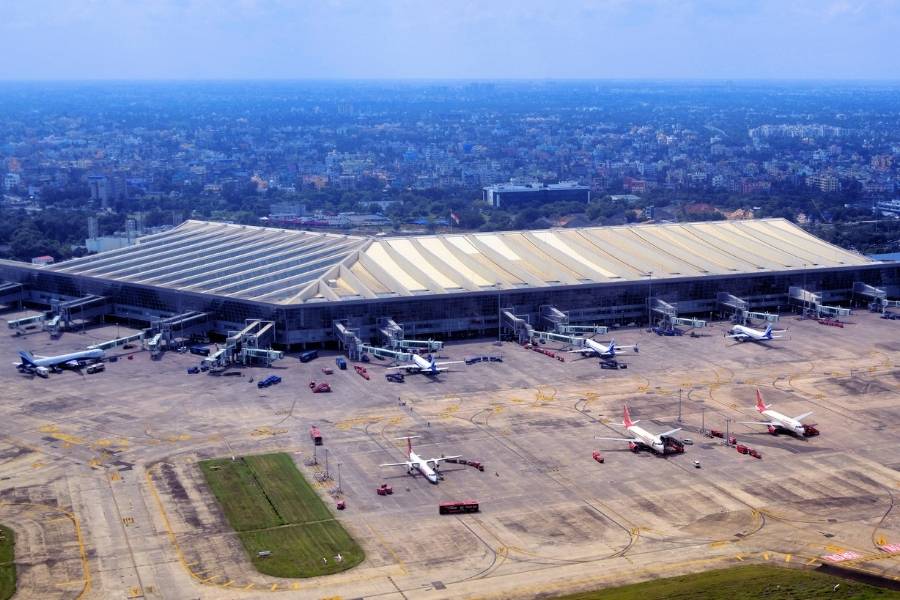
An aerial view of the present-day airport iStock
Calcutta had more than 15 domestic and international airlines doing business from the city and all big airlines had their full offices in Calcutta. Apart from Air India, there was Air France, British Airways, KLM, Japan Airlines, Swiss Air, Lufthansa and more. Japan Airlines used to do huge business from Calcutta airport. Such was Japan Airline’s bond with Calcutta and Bengal, that they used Bengali movie star Aparna Sen as their model.
The scenario changed when the Naxal movement devastated the law and order situation of the city, and Calcutta started losing capital to Bombay, Madras and Delhi. Thanks to the fall of Calcutta’s commercial importance from 1970 onwards, the city lost its glory as one of the major international connecting points.

